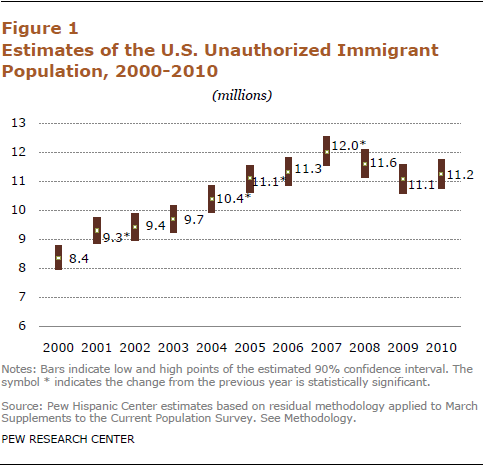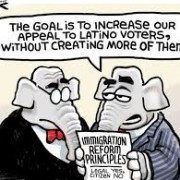How do current immigration issues “really” affect the U.S. Hispanic market?
by Claudia Goffan
We are all very aware of the current immigration issues. New legislation is being passed nationwide that restricts the undocumented immigrant from renting an apartment, obtaining a driver’s license or getting a job. Areas with high concentration of non-acculturated Hispanics also suffer from frequent ICE (ex-INS) raids.
This is a harsh reality to face for all of those who aspire for the “American Dream,” but don’t have the proper documentation. This group of immigrants can be divided into three subgroups. The first subgroup will permanently return to their country of origin, because of the current state of affairs. The second subgroup will return home, but might venture back to the U.S. when the political and economical climates become more hospitable. The final subgroup will remain in the U.S., but migrate to more lenient states.
The people that are returning to their countries of origin are deciding to stay there due to improved and stabilized economies, lower cost of living and the comfort of having family and friends near by.
The immigrants that are choosing to stay in the U.S. are moving to more tolerant states, such as Oregon, Alabama, North Carolina and Texas. In these states they are able to obtain a driver’s license and rent an apartment with their home-country documentation.
What does this mean to marketers in the U.S.?
It is very clear that the affected portion of the Hispanic market is the underserved and non-acculturated—approximately 12 million people that do not show up on the Census data.
This is bad news for companies that have only targeted the aforementioned group because their revenues are highly tied to a thinning market.
What’s the good news? The Hispanic market is not only composed of the underserved or non-acculturated. The rest of the market accounts for over 14% of the total US population (Source: Census Data 2000). This is the market that you will have to cater to now and in the years to come.
What can U.S. companies do?
- Re-evaluate their target market: Focus on the more established Latino population.
- Evaluate the feasibility of successfully offering the same product or service to the fully and semi acculturated segments of the Hispanic market.
- If this is not possible, see about expanding the product line and develop a product that would appeal to these market segments.
2013 Immigration Update
These immigration issues I have forecasted became a reality. Of course, the economy going downhill had a strong impact on undocumented Latinos leaving the country as well. It’s difficult to still believe in the “American Dream” when the possibilities are slim. We hope there will be a solution soon for the people that remain.
Meanwhile, those marketers that realized the Hispanic market is not only composed of non-acculturated Hispanics continue to profit from this ever growing trillion dollar market.







